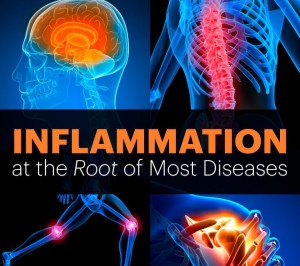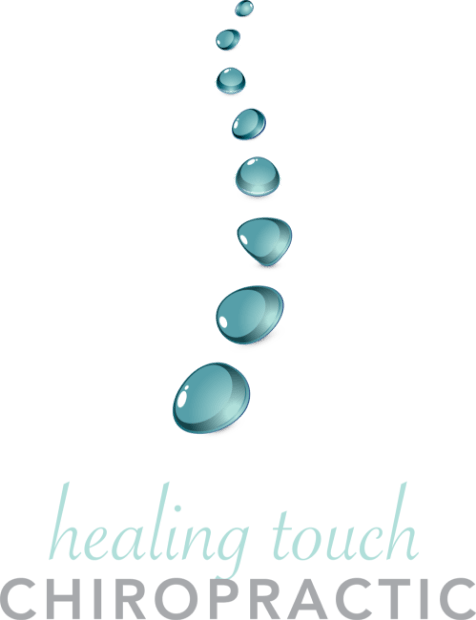
By John L. Stump, DC, PhD, EdD
The concept of chronic inflammation remains a confusing topic for many. A likely reason for this is that chronic inflammation does not resemble acute inflammation and is not conceptually associated with conditions that are treated with specific insured procedures, such as spinal manipulation, medications or surgery.
This lack of a conceptual association is problematic from a patient-outcome perspective and likely reflects challenges that need to be overcome in patient education strategies.
Why Chronic Inflammation Must Be Understood
Chiropractors may be interested to know that DD Palmer wrote a chapter in 1914 entitled Inflammation,1 stating that, “inflammation is present in most, if not all diseases, in the acute if not chronic.” More than 100 years later, we now know that all chronic diseases are actually chronic inflammatory states within local tissues. Systemic and local chronic inflammation and related pathophysiological changes involve both structure and function that are initially silent.
Eventually, the chronic inflammatory state sufficiently alters the structure and function of a given tissue and is identified by characteristic symptoms and/or lab tests. This allows for the application of a name, which describes the chronic inflammatory state, such as osteoarthritis, osteoporosis, tendinosis, diabetes, widespread pain, depression, fatty liver, heart disease, Alzheimer’s disease, Parkinson’s disease and/or cancer. 2,3,4 Even disc herniation is more prevalent in those suffering from chronicinflammation, most commonly associated with the metabolic syndrome and type 2 diabetes.4,5
Embracing Chemistry is Unavoidable
Embracing inflammatory chemistry is a challenge for most patients because they are being treated with manual care, posture and rehabilitation. Fortunately, it is not a requirement to memorize the chemistry that is altered in chronic inflammation, such as glycolysis, proteoglycan synthesis, Krebs’s cycle, electron transport, antioxidant metabolism, eicosanoid synthesis, cytokine production, neurochemistry or digestive physiology. Anyone, with enough education can understand these physiological processes.
Embracing chemistry does not mean that you should change the manipulative, postural and rehabilitative treatments. It does mean that you accept that the human body is made of chemistry: your physical structure is chemical; you are made of protein, lipids, carbohydrates, vitamins, minerals and water. It also means you are adjusting chemicals, putting chemistry into better posture and rehabilitating chemistry.
Consider also that physiology is chemistry in action, and biomechanics is actually the movement of our chemistry. Your mental state is a reflection of your brain chemistry, which means that to properly embrace the biopsychosocial model, you must embrace chemistry.
If you are fortunate, you will respond well to manual care, posture, rehabilitation, psychosocial and even acupuncture support. If you do not, then you must consider that your chemistry has become “pro-inflammatory.” 2,3,4,5
Fortunately, the anti-inflammatory lifestyle approaches that reduce inflammation will all favorably impact glycolysis, proteoglycan synthesis, Krebs cycle, electron transport, antioxidant metabolism, eicosanoid synthesis, cytokine production, neurochemistry and digestive physiology. Therefore, the key for the patient is to embrace the concepts and use anti-inflammatory interventions without worrying about the pathway details.
Lifestyle Factors that Promote a Chronic Inflammatory State
Stress, sleep loss, sedentary living, poor diet and poor energy all promote chronic inflammation.2,3,4,5 Your focus here is foundational dietary interventions.
Although dietary interventions can appear confusing and complex, that need not be the case. The first step is to assess inflammatory markers during the history and examination, which will provide insight for who may need lifestyle management. Interestingly, simple anthropometric measurements function as surrogate markers of inflammatory status.
Markers of Chronic Inflammation
Simple laboratory tests are the best way to identify chronic inflammation. Elevated levels of triglycerides, glucose, hemoglobin A1c, C-reactive protein and reduced levels of HDL cholesterol and vitamin D are the most telling. Except for vitamin D, these markers tend to correlate well with anthropometric measurements that can be assessed during the first visit, including waist circumference, waist/hip ratio and body mass index if the doctor feels it necessary.3,4
You can also fill out our Health Survey Questionnaire, which identifies health status, specifically low self-rated health and depression, both of which are directly correlated to chronic inflammation.3 In other words, in a few short minutes and without doing a single lab test, you can indirectly measure inflammatory status.
Nutrition for Chronic Inflammation
Diet is an issue for most people as more than two-thirds of the population is either overweight or obese. Obesity is known to be a chronic inflammatory state associated with chronic pain and degenerative diseases.3,4
Dietary changes should not focus on food and instead on the inflammatory markers mentioned previously. Food is emotional, whereas the markers are objective. Avoiding emotion and stress is an effective way to deal with nutrition, in general, and weight loss, specifically.
Caloric restriction is the most important factor in reducing inflammation. We become overweight because we consume too many calories, and it doesn’t matter if the calories are from sugar, flour or fat. However, Americans, on average, get almost 60 percent of their calories from refined sugar, flour and oils. Therefore the solution can be as simple as replacing refined calories with vegetation calories that allow for a greater volume of food consumption at a much lower caloric penalty.
The range of dietary options is wide. One can be a vegan, omnivore or ketogenic; the key is avoiding refined sugar, flour, refined oils and excess salt.
Summary
It is not necessary to understand the precise chemistry of chronic inflammation to employ an anti-inflammatory lifestyle (although resources are available to delve deeper into this topic). It is important to embrace inflammation as the underlying cause of most chronic pain and disease—whether your focus is, mechanical back pain, and biopsychosocial or general chiropractic or even acupuncture.
References
1 Palmer, D.D. The Chiropractor. 1914; 26-29. Kessinger Legacy Reprints.
2 Seaman, D.R. The diet-induced proinflammatory state: a cause of chronic pain and other degenerative diseases. J Manip Physiol Ther. 2002;25:168-179.
3 Seaman, D.R. The DeFlame Diet. Wilmington (NC): Shadow Panther Press; 2016.
4 Seaman, D.R. Body mass index and musculoskeletal pain: is there a connection? Chiro Man Ther. 2013;21:15.
5 Seaman, D.R. & Palombo A.D. An overview of the identification and management of the metabolic syndrome in chiropractic practice. J Chiropr Med. 2014;13(3):210-19.
